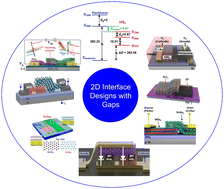Emerging trends in 2D TMDs with a broken gap interface
Abstract
Several review articles have previously addressed the investigation of p–n junction designs. The mechanism of broken gap p–n junction-based negative differential resistance (NDR), however, differs from that of two-dimensional transition metal dichalcogenides (2D TMDs) p–n junctions. NDR devices have recently sparked a lot of interest in the electronics industry, which is due to their folding current–voltage properties. A broad spectrum of threshold voltage levels can be successfully executed, which is a direct consequence of this property. The charge transport versus the quantum tunneling process appeals to the broken-gap NDR devices for high-speed switching. We combined the most recent and relevant findings, which involve where the mechanically exfoliated ultrathin nanomaterial layers are used for the development of the NDR devices. We examined various types of broken-gap heterojunctions, which are also known as type-III heterojunctions, in order to demonstrate the current modes of transportation and the optoelectronic effects. The broken-gap heterojunctions show how to make a high-performance heterodiode as well as explain the tunneling process in detail, which will be helpful with the creation of new electrical and optoelectronic devices in the future. We think that this summary of current nanomaterials research for a variety of NDR devices will help with the development of future technologies that are based on 2D vdW heterostructures for a variety of circuit applications that need NDR phenomena.



 Please wait while we load your content...
Please wait while we load your content...